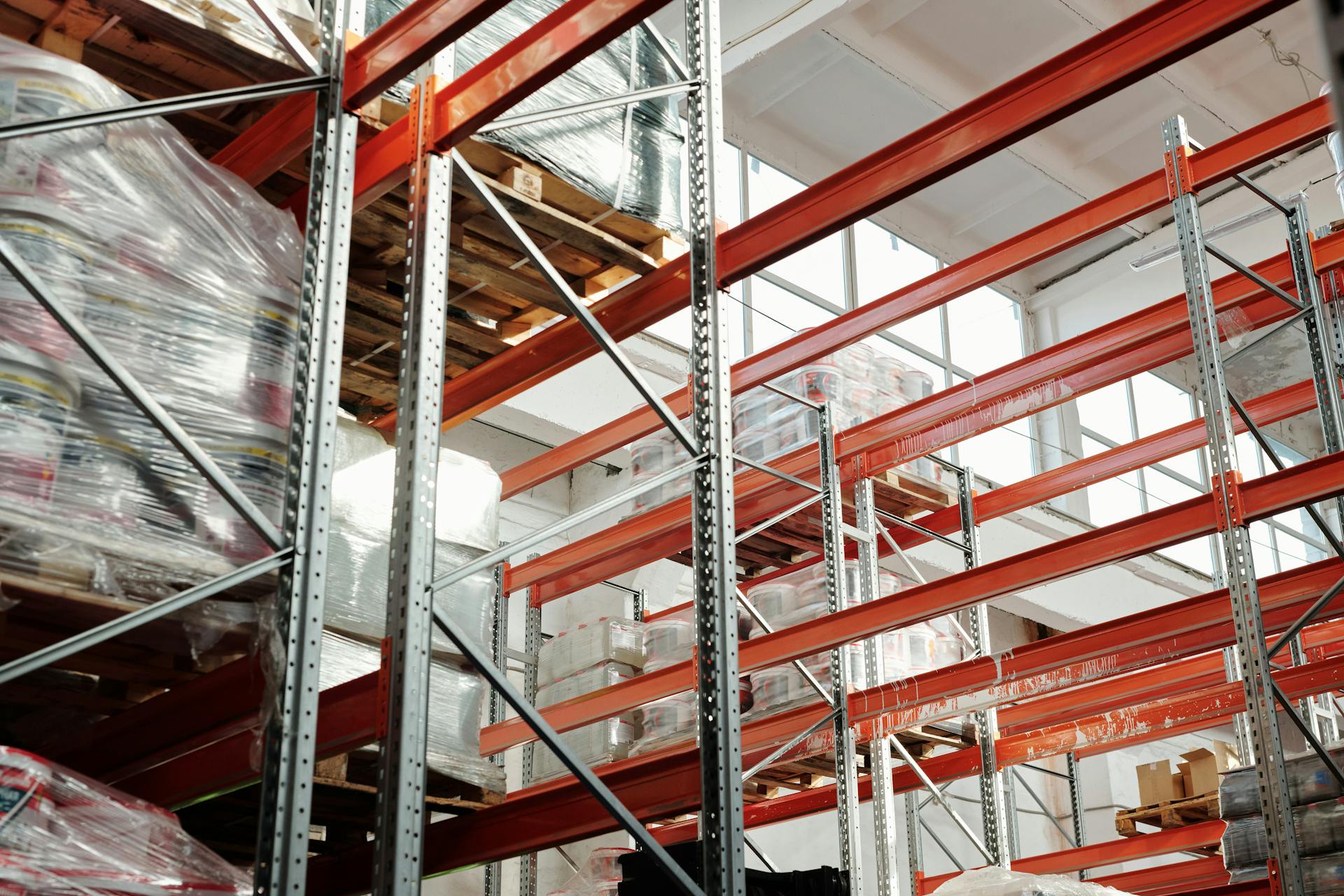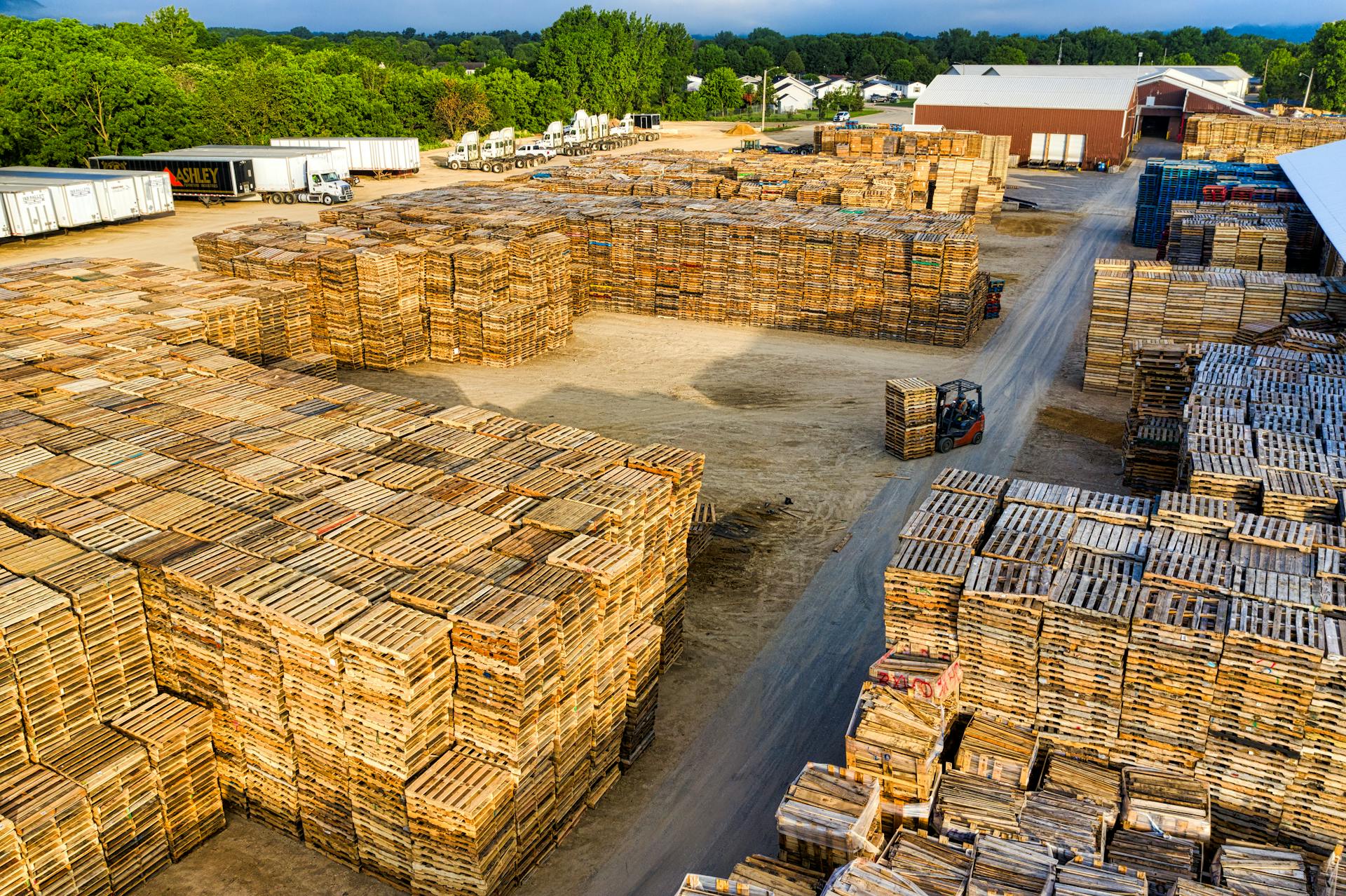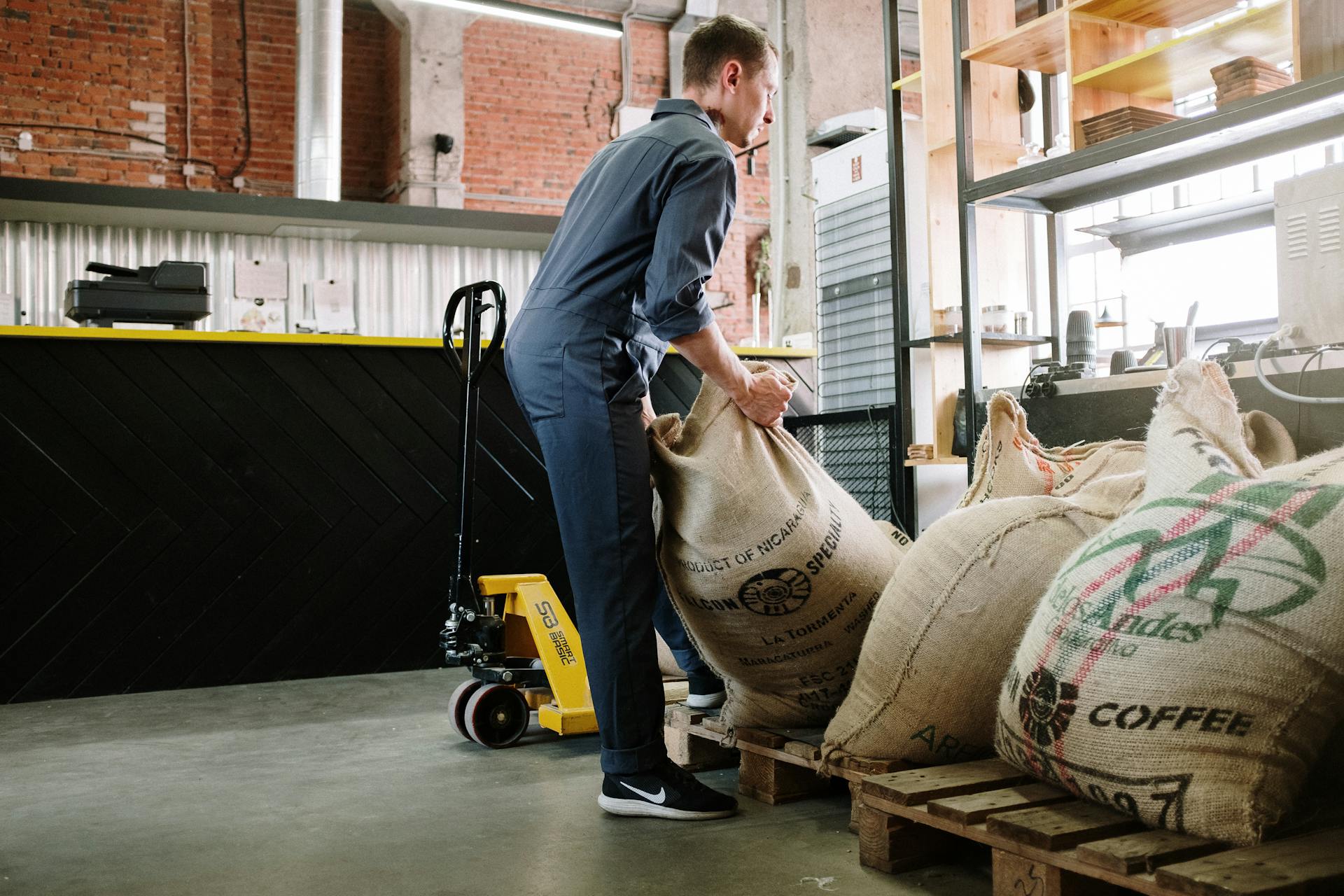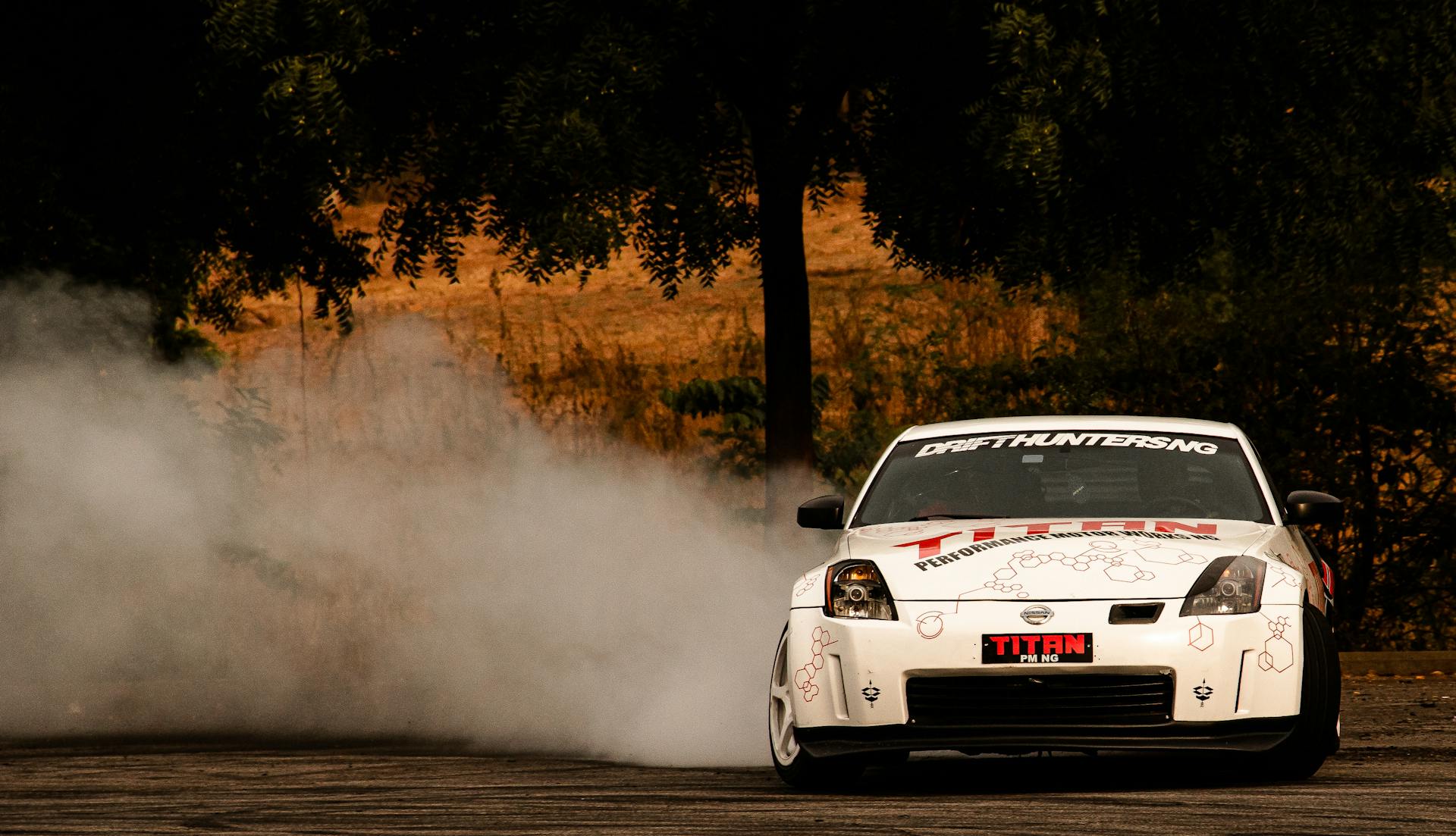
Skids and pallets are two popular options for moving and storing goods, but they serve different purposes and have distinct characteristics.
A skid is typically a flat, rectangular platform made of wood or plastic, designed to provide a stable base for heavy or bulky items.
Pallets, on the other hand, are designed to hold multiple items, usually boxes or crates, and are often used in warehouses and shipping facilities.
Skids are usually used for individual items that require extra support, whereas pallets are ideal for stacking and securing multiple items together.
Skids are often used in construction and manufacturing settings, where heavy machinery or equipment needs to be moved or stored.
What is a Pallet?
A pallet is a widely used method for storing and shipping freight, commonly measuring 48"x40" with a weight capacity of up to 1000kg.
The most notable difference between a pallet and a skid is the extra flat-bottom deck on a pallet, making it easier to use with forklifts but harder to drag.
Worth a look: Forklift vs Pallet Jack
Pallets have a standard weight capacity of about 2,200 pounds, making them suitable for heavier machine tools like sawmills and grinding machines.
The extra bottom deck on a pallet creates more friction, which can make it harder to drag around tight spaces in an LTL truck.
Pallets typically consist of three or four stringers that support several deck boards, providing more stability than skids.
Standard sized pallets are designed for items in transit, withstanding varying climate conditions or storing goods in pallet racks.
Wood pallets are susceptible to damage from the elements and overuse, but plastic pallets can be a more durable option.
Discover more: Which End of Pallet Industry Standard for Lifting Pallets
What is a Skid?
A skid is essentially a pallet minus the bottom wood deck, making it a more mobile and lightweight option. You can easily stack and store skids not in use, which is a big advantage in warehouses.
Skids are often used as a permanent foundation for heavy machinery and heavy equipment, taking advantage of their mobility. In fact, many warehouses use skids as a permanent foundation for heavy machinery.
A skid is also a low-profile mobile platform that rests on pedestals attached to the deck, making it a simple and effective solution. Skids were used extensively before the creation of the double-faced pallet in the 1930s.
In the US, a skid is often referred to as a pallet, but it's a little more generic and can refer to any sort of frame under a heavy item where the frame is designed to "skid" or be pushed about without lifting. This can include wooden frames, but also other types of materials.
Skids are often used for hauling heavy loads, and during World War II, they were used for hauling large amounts of supplies through sand, where the lack of bottom deck boards allowed for less friction.
Discover more: Deck Made from Pallets
Pallet vs Skid
Pallets and skids are often used interchangeably, but they have distinct differences.
Pallets are super stable and can accommodate a variety of weights and sizes. They're also easy for forklifts and pallet jacks to load and unload, making them a convenient choice for warehouses.
Skids, on the other hand, are less stable due to the lack of bottom deck boards. They're often used as a permanent foundation for heavy machinery and are more suitable for applications where forklifts aren't necessary.
Here are some key differences between pallets and skids:
In summary, pallets are the better choice for most applications, while skids are better suited for heavy machinery and specific situations where stability isn't a concern.
When Are Pallets Used?
Pallets are a better choice than skids when your load needs more support, strength, and stability. A double-deck design with stringers lets a pallet provide additional support.
Pallets can carry more weight and still not collapse, which is particularly true when weight is spread unevenly across the pallet deck. This is a common scenario in warehouses where items are stacked haphazardly.
Pallets have extra resistance compared to skids, so the pallet and load are both less likely to slide or slip. This makes them a safer choice for heavy loads.
Pallets are designed to be picked up and moved by many different machines, such as forklifts, which means they can be stacked when loaded. This is a big advantage over skids, which can be a deciding factor for many people.
For your interest: Deck of Pallets
Pallet vs Skid
Pallets and skids are often used interchangeably, but they have distinct differences.
Pallets are super stable, can accommodate a variety of weights and sizes, and are easy to load and unload with a forklift or pallet jack. They're also great for racking and holding up well to transportation and storage.
A skid, on the other hand, is a low-profile mobile platform that lacks a bottom deck, making it less stable than a pallet. Skids are often used as a permanent foundation for heavy machinery and equipment.
Here are some key differences between pallets and skids:
- Pallets have a top and bottom deck boards, while skids only have a top deck board.
- Pallets are more stable and easier to load and unload with a forklift or pallet jack.
- Skids are cheaper and use less space, but are less stable and more difficult to load and unload.
- Pallets are ideal for transporting and storing products, while skids are better suited for heavy machinery and equipment.
In the US, a skid is often referred to as a "pallet" 9 times out of 10, but technically, a skid is a more generic term that refers to any type of frame under a heavy item that's designed to be pushed around without lifting.
If you're unsure whether to use a pallet or skid, it's best to consult with a wood packaging designer or a shipping expert who can guide you in the right direction.
Sizing for Standard
Sizing for Standard Pallets and Skids is crucial to get right. The first number in a pallet measurement is the stringer length, which is the depth of the pallet.
For example, a pallet with a stringer length of 40 inches and a deck board length of 48 inches would be a standard size. This measurement is key to ordering a custom pallet.
The second number in a pallet measurement is the deck board length, which is the width of the pallet. This measurement is also important for creating a custom pallet.
I've seen many people get confused about the difference between a pallet and a skid, but it all starts with the sizing.
Curious to learn more? Check out: Board Pallets
Skid Options
Skids don't have bottom deck boards, which makes them less stable than pallets. This lack of stability can be a problem when using forklifts to load and unload them.
Skids are actually ideal for use as a permanent foundation for heavy machinery. They keep these items mobile and off the ground, which is perfect for equipment that's too heavy to be moved via forklift.
Here are some key differences between skids and pallets:
- Pallets have bottom deck boards, making them more stable
- Skids are cheaper than pallets
- Skids use less space and are easier to store when nested
Benefits of Over Skids
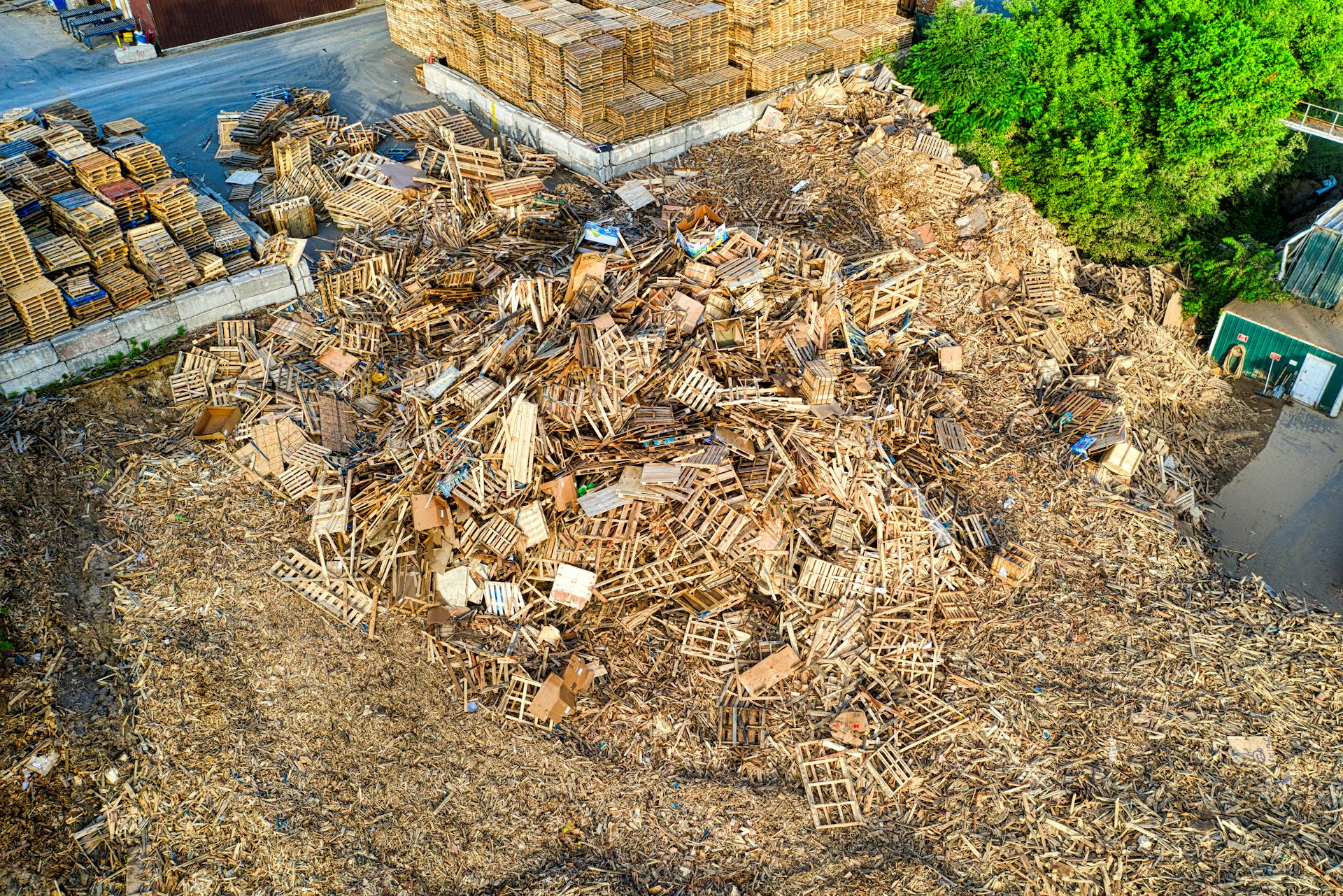
Warehouse foremen want pallets to easily pass through buildings, to stack and fit in racks, to be accessible to forklifts and pallet jacks, and to function in automated warehouses.
Pallets are designed to be versatile and convenient, making them a popular choice for many industries.
A heavy-duty custom sized pallet is likely to be a suitable option for those who need to transport heavy loads.
In contrast, skids are often used for heavy-duty machine tool transport, particularly in the manufacturing industry in the U.S, Canada & Mexico.
Skids may not be as easily accessible to forklifts and pallet jacks as pallets are.
Broaden your view: Transport Pallets
Skids: Better Option
Skids are a great option for certain situations, and they have some unique advantages over pallets. In fact, they're ideal for use as a permanent foundation for heavy machinery, making these types of items mobile and keeping them off the ground.
Skids are also more mobile than pallets, which can be a big plus in certain industries. For example, during World War II, skids were used to haul large amounts of supplies, and their design made them perfect for navigating sandy terrain.
However, skids are not as stable as pallets, which can be a concern when transporting heavy loads. They're also more difficult to load and unload with a forklift, which can lead to potential failures.
Here are some key differences between pallets and skids:
Overall, skids are a great option for industries that require heavy machinery to be mobile and easy to transport. Just keep in mind their unique design and limitations when making your decision.
Four-Way
Four-way pallets are designed to be lifted by their more rigid stringers and can be lifted by a forklift or pallet jack from any side.
Four-way pallets are extremely durable, making them perfect for environments with high levels of moisture, even water.
Frequently Asked Questions
How many pallets is a skid?
A skid is a single-deck pallet, essentially a single pallet. It's not a quantity of pallets, but rather a type of pallet.
Why do Americans call pallets skids?
The term "skid" is sometimes used for pallets due to historical roots, as early pallets were actually flat platforms without a bottom deck. This interchangeable usage is mainly a result of regional preferences and linguistic evolution.
Sources
- https://www.connerindustries.com/pallet-or-skid/
- https://english.stackexchange.com/questions/203761/what-is-the-difference-between-pallet-and-skid
- https://cowtownexpress.com/blog/warehousing-skid-vs-pallet-differences-and-uses
- https://machinetransport.com/2022/08/pallets-vs-skids-whats-the-difference/
- https://www.custombuiltpallets.com/why-plastic-pallets/pallets-vs-skids/
Featured Images: pexels.com
